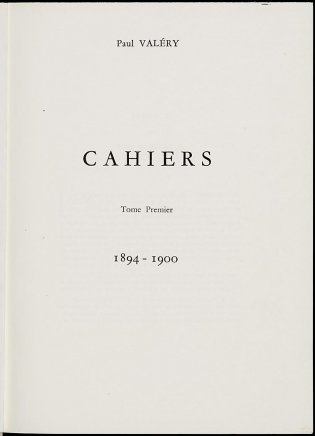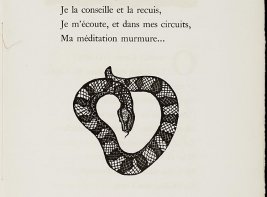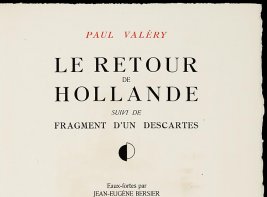Cahiers
Year: (1957 - 1961)
Author: Paul Valéry (1871 - 1945)
Artist: Paul Valéry (1871 - 1945)
Publisher: Centre National de la Recherche Scientifique
Mental morning exercises
Over the course of fifty years, Valéry would ultimately fill no fewer than 261 copybooks, with a total length of approximately 30,000 pages. From 1894 onwards, he got up at five o'clock every morning to dedicate himself to these mental morning exercises before he went to work. Every thought was to be written down as precisely as possible to give his mind a good workout: this was typical of Valéry, the most versatile bookworm of the century, but not necessarily a coherent thinker. His work is fragmentary, and only rarely does it follow through on any of its ideas.
In the copybooks he wrote down - often undeveloped- thoughts about anything imaginable: literature, art, language, the workings of memory, and mathematics. He did this in lyrical prose poems, essays, self-analyses, drawings, and mathematical tables. These different subjects and text forms have in common that they are all products of the human mind. For the mind is the very thing that structures the chaos of sensations, inspirations et cetera into a meaningful whole via endless sifting and combining. This holds true for a poem, but also for a mathematical formula or for a painting.
From 1957 to 1961, the Centre National de la Recherche Scientifique (CNRS) published the complete Cahiers in a facsimile edition made up of 29 thick volumes. This is the only complete edition of the Cahiers to be published so far. Countless anthologies of these logs have been published through the years, both during Valéry's lifetime and after his death. The advantage of this photomechanical reprint over a transcribed version is that the handwriting reveals what corrections and strikethroughs the author applied while writing. Also, the many calculations, tables and drawings make up an almost equally important part of the Cahiers as the text. This work, which was published in a limited edition of 1100 copies, is now an important resource. The Koopman Collection contains number 762 of the 1000 copies that were produced for the book market.
Bibliographical description
Description: Cahiers / Paul Valéry ; [préf. par Louis de Broglie]. - Paris : Centre National de la Recherche Scientifique, 1957-1961. - 29 dl. : ill. ; 30 cm
Printer: Impr. nationale (Paris)
Edition: 1100 copies
This copy: Number 762 of 1000 copies
Bibliography: In liefde verzameld, p. [91]
Shelfmark: KW Koopm A 252-280
References
- Autour des Cahiers. Paris, Lettres Modernes Minard, 1999
- Denis Bertholet, Paul Valéry 1871-1945. Paris, Plon, 1995
- Gabriele Fedrigo, Valéry et le cerveau dans les cahiers. Paris, Harmattan, 2000
- Paul Valéry, De macht van de afwezigheid. Groningen, Historische Uitgeverij, 2004









